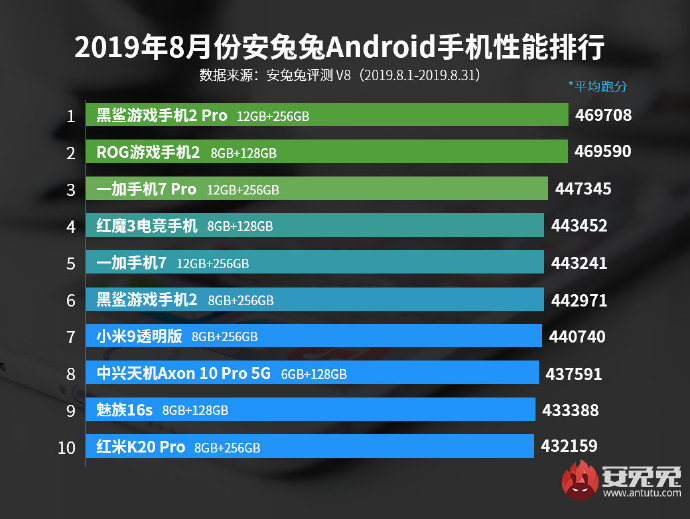Huawei has launched its flagship smartphone Mate 30 Pro powered by the company’s own Kirin 990 chipset, which has now been benchmarked by AnTuTu. The benchmark result shows the highest score from a device powered by Kirin 990 SoC.
The chipset has managed to score 457,357 points in the benchmark test. While the score is highest for the Kirin 990-powered device, it is still lower than the highest score of a device powered by Qualcomm Snapdragon 855 Plus chipset.

The device tested for this Kirin 990 benchmark is Huawei LIO-AL00, which is the Mate 30 Pro. It features a screen resolution of 2400 x 1176 pixels, Kirin 990 processor, Mali -G76 GPU, 8GB RAM, 128GB storage, and is running the latest Android 10 operating system.
While the overall score of the device is 457,357, the smartphone has scored 151,647 points for CPU, 159,418 points for GPU, MEM score of 87,367, and UX score of 58,925 points. In the AnTuTu ranking, the highest scoring device is Black Shark 2 Pro with 469,708 points, followed by ASUS ROG Phone 2 with a score of 469,590 points.

Earlier, in the AI Benchmark test, Huawei HiSilicon Kirin 990 5G chipset was ranked ahead of the Qualcomm Snapdragon 855 Plus SoC, topping the rankings. The chipset has achieved a score of 52,403 in the test, far ahead compared to the scores of Unisoc Tiger T710 and Qualcomm Snapdragon chipsets.
Editor’s Pick: Huawei Mate 30 and Mate 30 Pro smartphones launched; brings new design, impressive cameras, and faster charging
The Huawei Kirin 990 5G is a 7nm octa-core chipset that has 10.3 billion transistors. It uses two big, two middle and four little cores to optimise multitasking, with clock speeds of 2.86GHz, 2.36GHz and 1.95GHz respectively. It also packs a 16-core Mali G76 graphics processor which should offer plenty of power for mobile gaming, as well as smart cache built in to reduce bandwidth by up to 15 percent.
It is also touted to be the first full-frequency 5G SoC — with support both non-standalone and standalone architectures as well as TDD/FDD full frequency bands. The Kirin 990 is a true unified design, supporting Sub-6 GHz 5G networks on both SA and NSA architectures.
For photography, it has a new fifth-generation Dual ISP boasts DSLR-level hardware noise reduction and block-matching and 3D filtering. Aside from implementing the 5G modem, the biggest change in the Kirin 990 is going to be the NPU which is a co-processor optimised for the sort of vector math that’s the lifeblood of machine learning frameworks.







